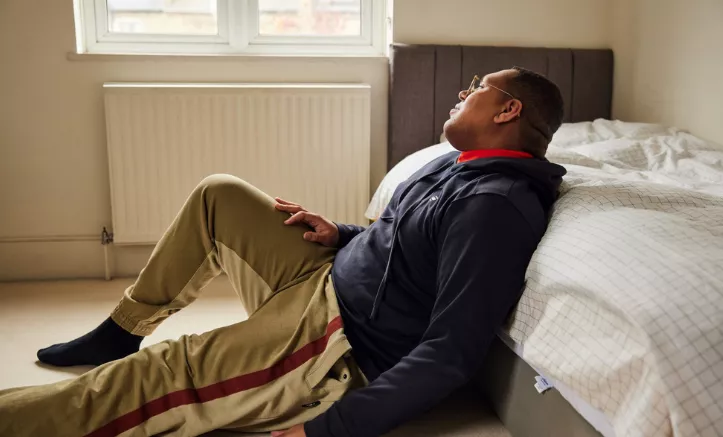
If you’re newly diagnosed with diabetes, or close to someone who lives with the condition, this blog shares first-hand experiences of people from our south west and south central diabetes community.
Hypoglycaemia (also known as a ‘hypo’), is when your blood glucose levels become too low. It can be frightening for the person experiencing one, and it can also be alarming for friends and family witnessing one.
Read on to increase your knowledge of symptoms of the condition, in support of Hypo Awareness Week (11th – 17th September).
Becky, from Devon
“When I experience a hypo I feel weak, shaky and nervous. I can't concentrate. It's like being on the brink of fainting or having a panic attack and being curled up in a ball trying not to cry! My family tell me that I can seem "out of it".
“The best advice I can give is to use a Continuous Glucose Monitor (CGM) or flash glucose monitor if you’re eligible for one. When you're having frequent hypos, they become harder to spot, so the tech can really support you. Otherwise, check your blood glucose levels the minute you start feeling symptoms. Regularly checking your blood glucose levels is the best way to figure out what your symptoms look like for you.”
James, from Oxfordshire
“I am lucky enough to still be able to feel the symptoms of a hypo. I become clammy sometimes, my stomach growls at me and I sometimes become shaky. I then make my decision on how to treat the hypo.
“My partner says that I come across as frustrated that my levels have gone low, and she notices that I go searching for food sources. When the Libre alarm goes off, she normally asks me if I feel OK, and I’ll say I’m fine. So she believes I don’t show the symptoms as much as I feel them. But different people react in different ways.”
Daisy, from Devon
“When I get a hypo, I start to feel really hungry and irritable, and if I don’t treat it right away, then it progresses to feeling confused, sweating and I look pale, especially around the lips and mouth. When I feel one coming on, I check my blood glucose levels as soon as possible.
“My family know when a hypo is coming on because I’ll start to raid the food cupboards, that’s usually the first sign. I manage my blood glucose levels through a CGM which is a simpler, quicker way for me to keep on top of my numbers.”
Lee, from Somerset
“If my sugar levels drop steadily, I can usually sense it. I’ll feel a bit lightheaded and will have a craving for something to eat. If my levels drop quickly, I can feel confused, dizzy and get very sweaty. Sometimes I’ll feel weak in my legs and knees too and can even experience a strange feeling in my ears! My vision can also be affected, feeling either things are in slow motion or blurry.
“Other people have told me that when I am low, I often look pale. Also, if I am very low, I can be incomprehensible and not able to put words or sentences together.
“I know that a hypo can be mistaken for other things, including being drunk. So my first bit of advice to others is not to judge if you find someone that may be showing signs of a hypo.”
Find out more about hypos: What is a hypo? (Hypoglacaemia)
